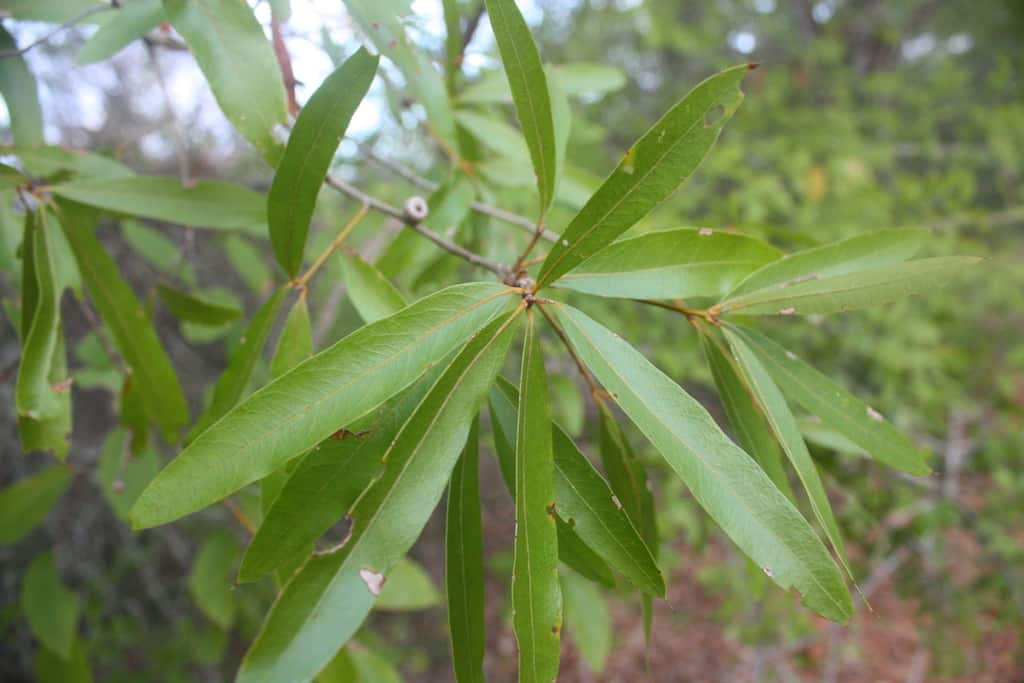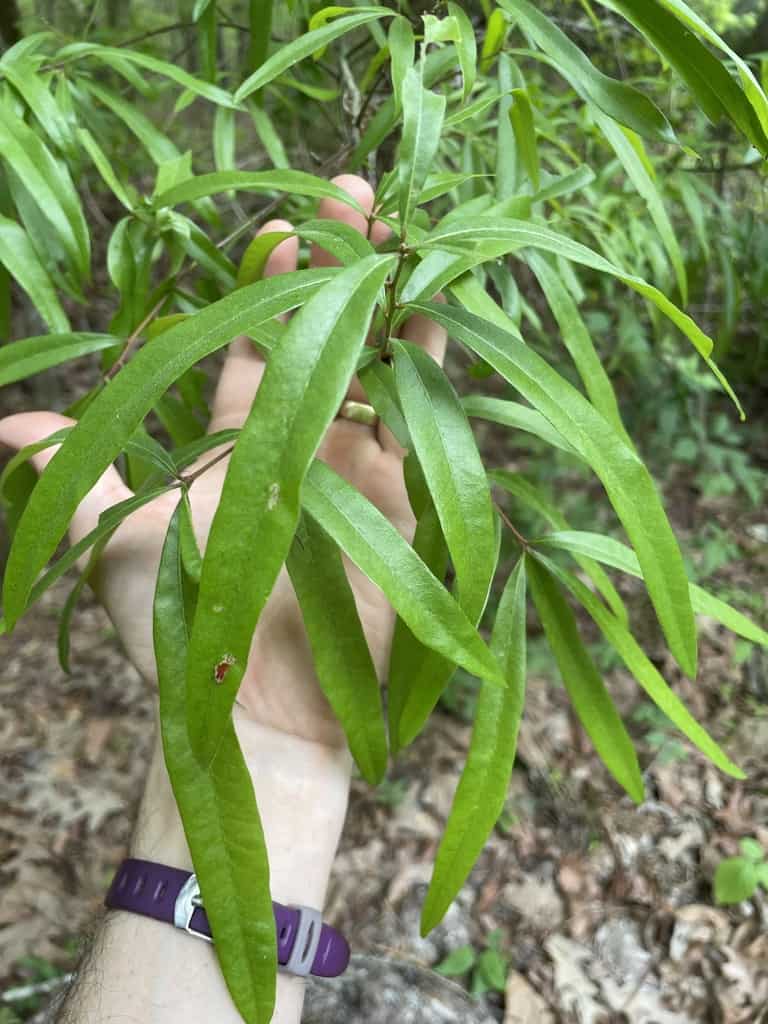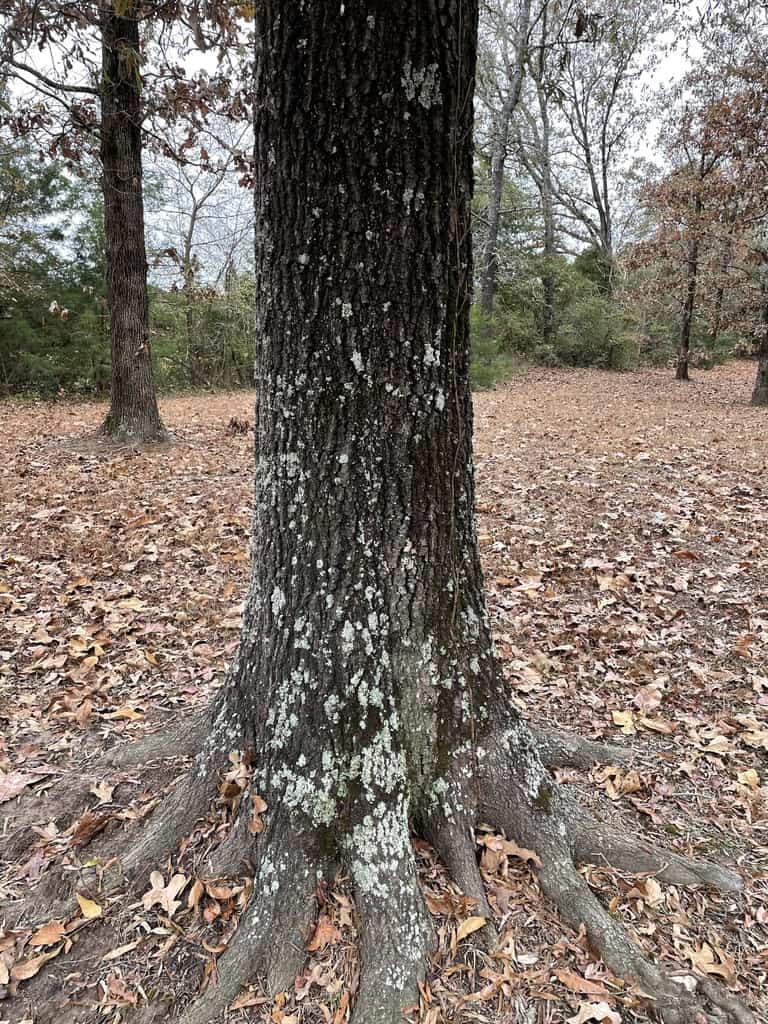
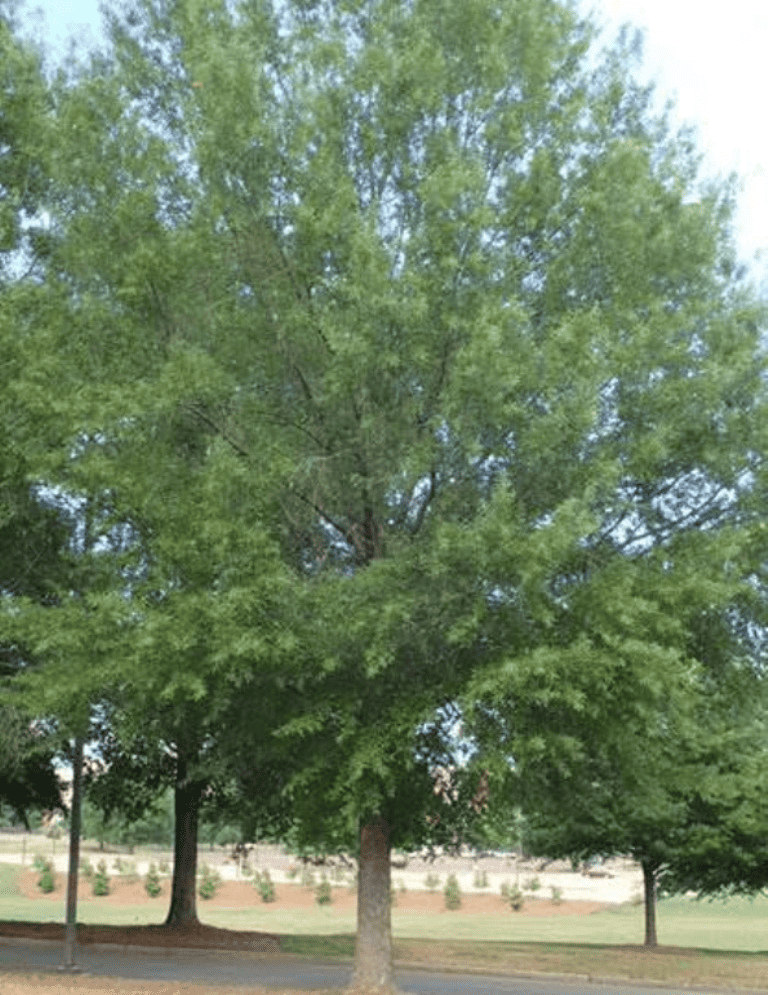
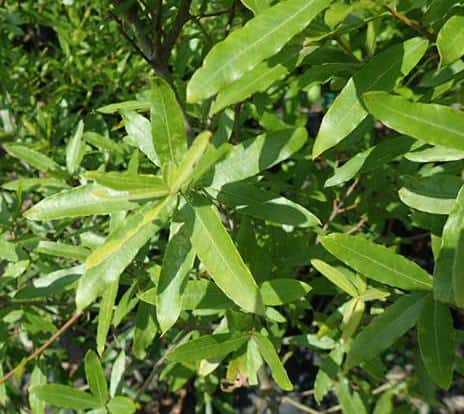
Oaks Quercus spp. are important native trees both in terms of their dominance in many natural forests of Louisiana and for the essential role oaks play in supporting the native wildlife of the state. Most oak species are deciduous, medium to large trees. They bear wind-pollinated flowers March – May. All oaks produce acorns, which are an important food for native wildlife; Whitetail Deer, squirrels and other small mammals, waterfowl, Blue Jays, and Wild Turkey depend on acorns during Winter. Historically acorns also were an important food for humans. Oaks are perhaps the most important link in the food chain between insects and birds. Oaks are the host of the larval (caterpillar) stage of more than 500 different species of moths or butterflies, the diets of young birds consist mostly of caterpillars, and a single nest of baby birds requires thousands of caterpillars during the few weeks between hatching and leaving the nest. Therefore, nesting success at a site likely depends on the presence of oaks.
The oaks of Louisiana are subdivided into two groups: red oaks and white oaks. The red oak group has: leaves with pointed lobes tipped with bristles; acorns that mature in the fall after the second growing season and sprout the following spring, acorn caps that are hairy inside and brownish with flat cap scales, and tree bark that is relatively dark, smooth or ridged, but not peeling. Representatives of this group include Nuttall Oak, Willow Oak and Shumard’s Oak. The white oak group has: leaves with rounded lobes that lack bristles, acorns that mature in the fall after one growing season and mainly sprout that same fall, acorn caps with pale and knobby scales and not hairy inside, and bark that is relatively pale, blocky and scaly or peeling. Overcup Oak, Swamp Chestnut Oak and White Oak belong to the white oak group.
Landscapers and property owners have a variety of native oak species from which to choose to fit most site conditions in Louisiana. Overcup Oak Quercus lyrata is medium in size (60 – 80’ X 25’), relatively slow growing, and adapted to tolerate poorly-drained soils. It occurs naturally in river bottoms, coastal plain swamps, and lowlands inundated for extended periods. Overcup Oak will do fine in upland landscapes as well as sites with poor drainage. Its leaves turn yellow in fall for an attractive display. Nuttall Oak Quercus texana (75’ X 60’) occurs at a slightly higher elevation in floodplains and bottomlands than Overcup Oak, but it too can thrive on well-drained sites as well as those with poor drainage. Leaves turn red to orange-red in fall. Nuttall Oak makes an excellent lawn, patio, or street tree; it can be limbed up to provide space beneath its branches for human activity, or in a naturalized area, for woodland shrubs and small trees. Swamp Chestnut Oak Quercus michauxii (60’ – 100’ X 45’) and Willow Oak Quercus phellos (100’ X 50’) are relatively large trees and occur naturally on still higher floodplain sites than Overcup Oak and Nuttall Oak. Both species are commonly cultivated in residential areas because of their high adaptability to almost any soil conditions. Swamp Chestnut Oak is long-lived, relatively slow growing, drought tolerant, and tolerates compacted soils better than most oaks. Fall color displays are yellow to vibrant red for Swamp Chestnut Oak and yellow to russet for Willow Oak. Shumard’s Oak Quercus shumardii and White Oak Quercus alba do not tolerate wet soils as do the oaks described above. Both occur naturally in moist upland forests and stream banks in Louisiana. Shumard’s Oak is relatively fast-growing and thrives in loamy, well-drained soils, but can tolerate short-term flooding as well as drought conditions. It is a handsome shade tree with attractive fall color displays of yellow to vibrant reds. White Oak is a popular, long-lived shade tree that does best in deep, moist, well-drained loamy soils. It does not tolerate poor drainage and alkaline soils and is particularly sensitive to root-zone disturbance from construction activity or replacing the forest duff ground cover around an established tree with turf. The fall foliage display is predominantly burgundy in color.

